Quantum Operators:Cheat Sheet-Mind Map

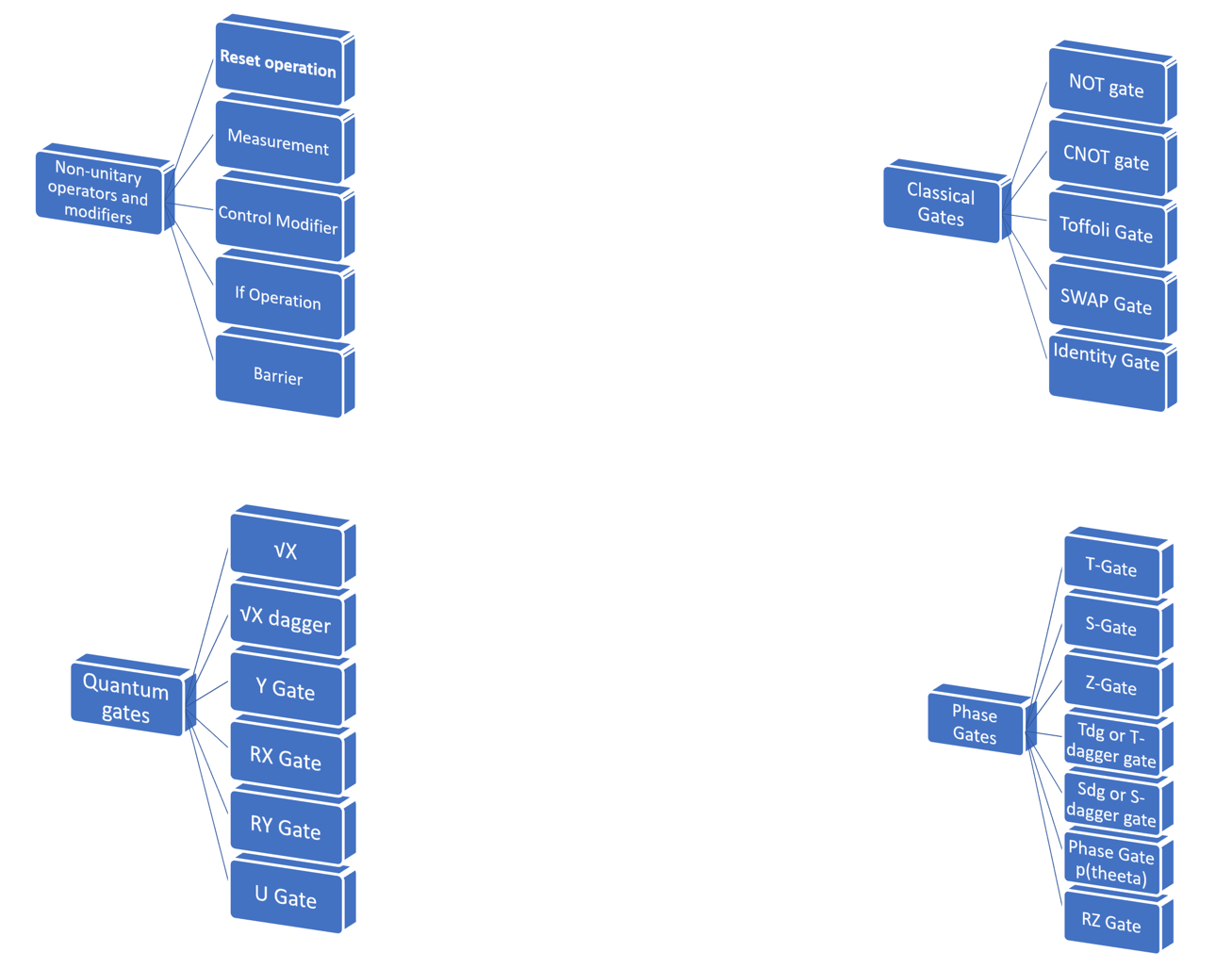
Terms used :
1- QASM
QASM is an abbreviation for quantum assembly language. It is a set of text-based instructions to describe and visualize quantum circuits. IBM Quantum uses a dialect called OpenQASM.
2-relative phase
A phase difference between components of a superposition state.The first term in a superposition is made to be real, and the remaining states have phase values relative to this, e.g. |𝚿> = |0> + e^iθ|1>
3- quantum circuit
A quantum circuit is a series of quantum gates and measurements applied to a set of qubits in a specific order. The purpose of a quantum circuit is to perform a specific task or computation on the qubits.
Note: The q-sphere image in each gate entry below shows the state after the gate operates on the initial equal superposition state.
1- Classical Gates
Not Gate-The NOT gate, also known as the Pauli X gate.The NOT gate is equivalent to RX for the angle 'pi' or to ‘HZH’.
CNOT gate-The controlled-NOT gate, also known as the controlled-x (CX) gate, acts on a pair of qubits, with one acting as ‘control’ and the other as ‘target’.
Toffoli gate-It also known as the double controlled-NOT gate (CCX), has two control qubits and one target. It applies a NOT to the target only when both controls are in state |1>.
SWAP gate- The SWAP gate swaps the states of two qubits.
Identity Gate-It ensures that nothing is applied to a qubit for one unit of gate time.

2 - Phase Gates
A phase gate (also known as a phase shift gate) is a quantum gate that applies a phase shift to a quantum state. It is a unitary operation that changes the phase of a quantum state by a specified amount.
They are also useful for implementing quantum algorithms, such as the quantum Fourier transform and the quantum phase estimation algorithm.

3- Non Unitary Operators and Modifiers
Non-unitary operators and modifiers play an important role in quantum computing and are used to perform a wide range of tasks and operations.

4-Hadamard Gate
The Hadamard gate is a single-qubit quantum gate and it is a unitary operator that acts on a single qubit and performs a rotation in the Bloch sphere. The effect of the Hadamard gate is to take the state of the qubit and create an equal superposition of the two basis states.

5-Quantum Gates
Quantum gates are the equivalent of classical logic gates, which are used to perform operations on classical bits. Just as classical logic gates perform operations on classical bits, quantum gates perform operations on quantum bits, or qubits.
There are several types of quantum gates, including single-qubit gates, two-qubit gates, and multi-qubit gates. Single-qubit gates operate on a single qubit and include gates such as the Pauli X gate, the Pauli Y gate, and the Pauli Z gate. Two-qubit gates operate on two qubits and include gates such as the controlled-NOT gate and the controlled-Z gate. Multi-qubit gates operate on three or more qubits and include gates such as the Toffoli gate and the Fredkin gate.
Quantum gates are essential for implementing quantum algorithms and circuits, and they play a crucial role in the development of quantum computing technology

6- Single Qubit Gates and their matrix Representation
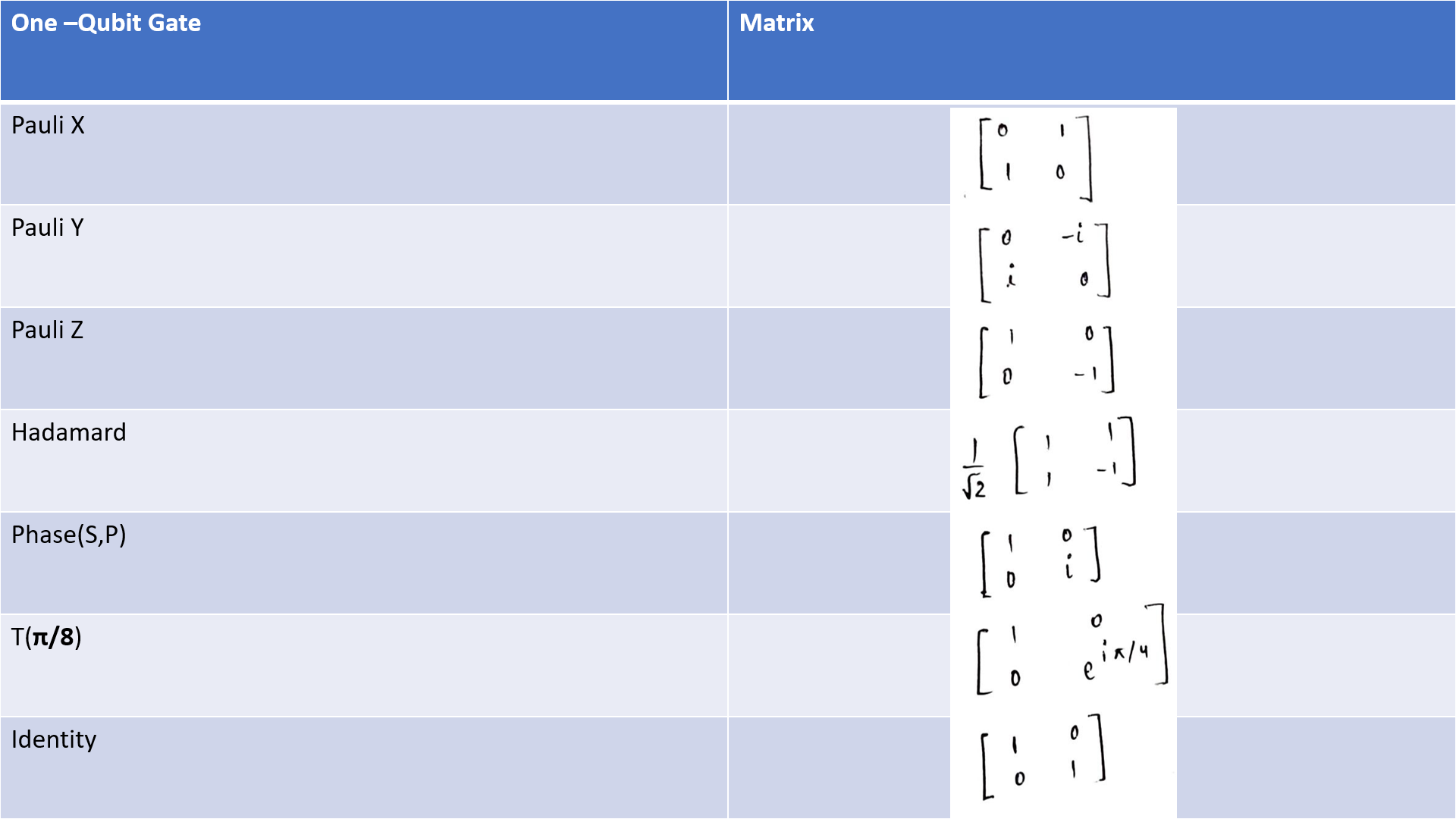
7- Two qubits and Multi Qubit Gates and their corresponding matrix representation
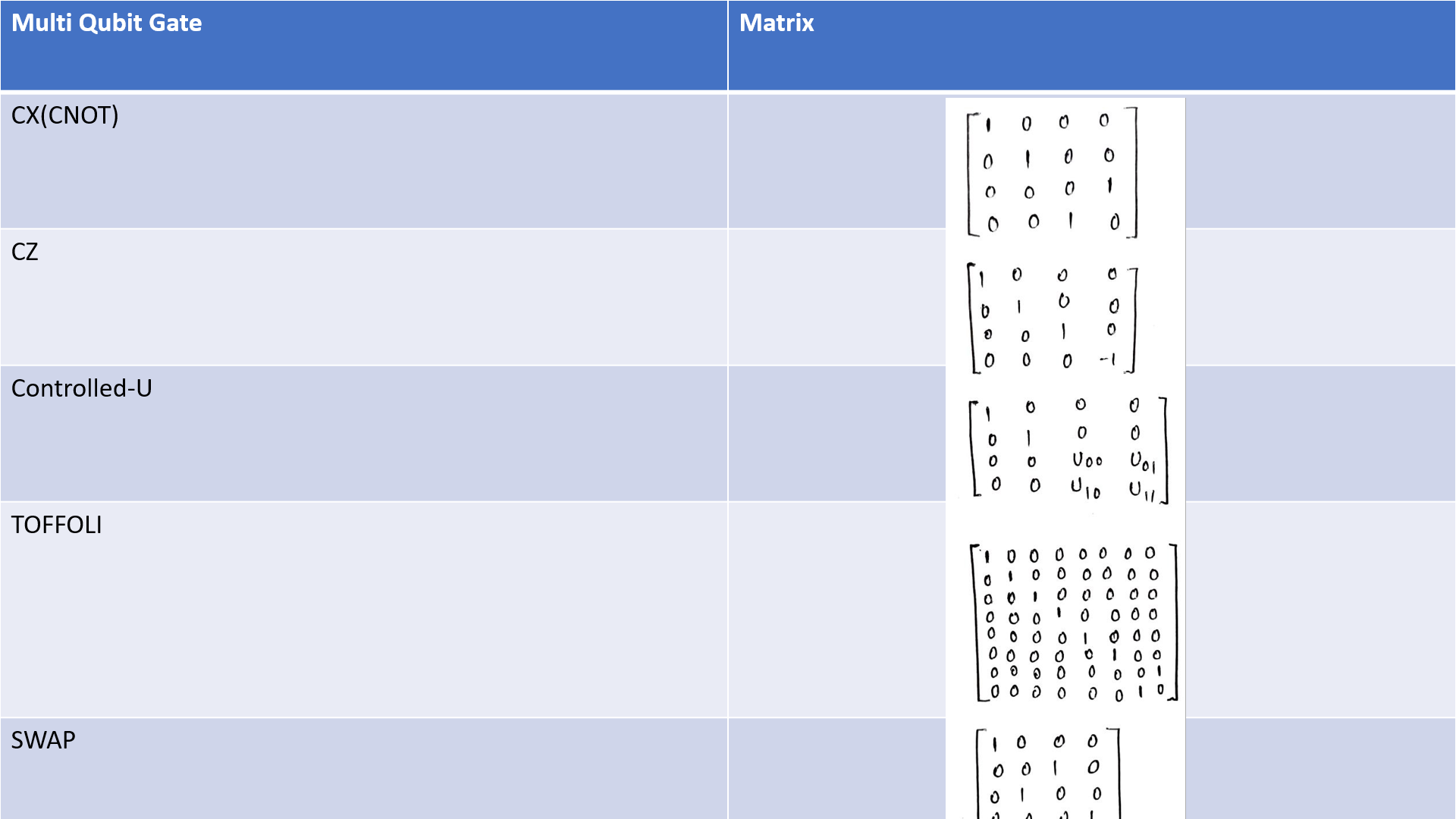
8- Parameterized Gates and their corresponding Matrix
A parametrized gate is a quantum gate that has adjustable parameters. These parameters can be adjusted in order to control the behavior of the gate and the resulting quantum state. Some examples of parametrized gates include the phase gate, which introduces a phase shift to a qubit, and the rotational gates, which rotate the state of a qubit around a specific axis.
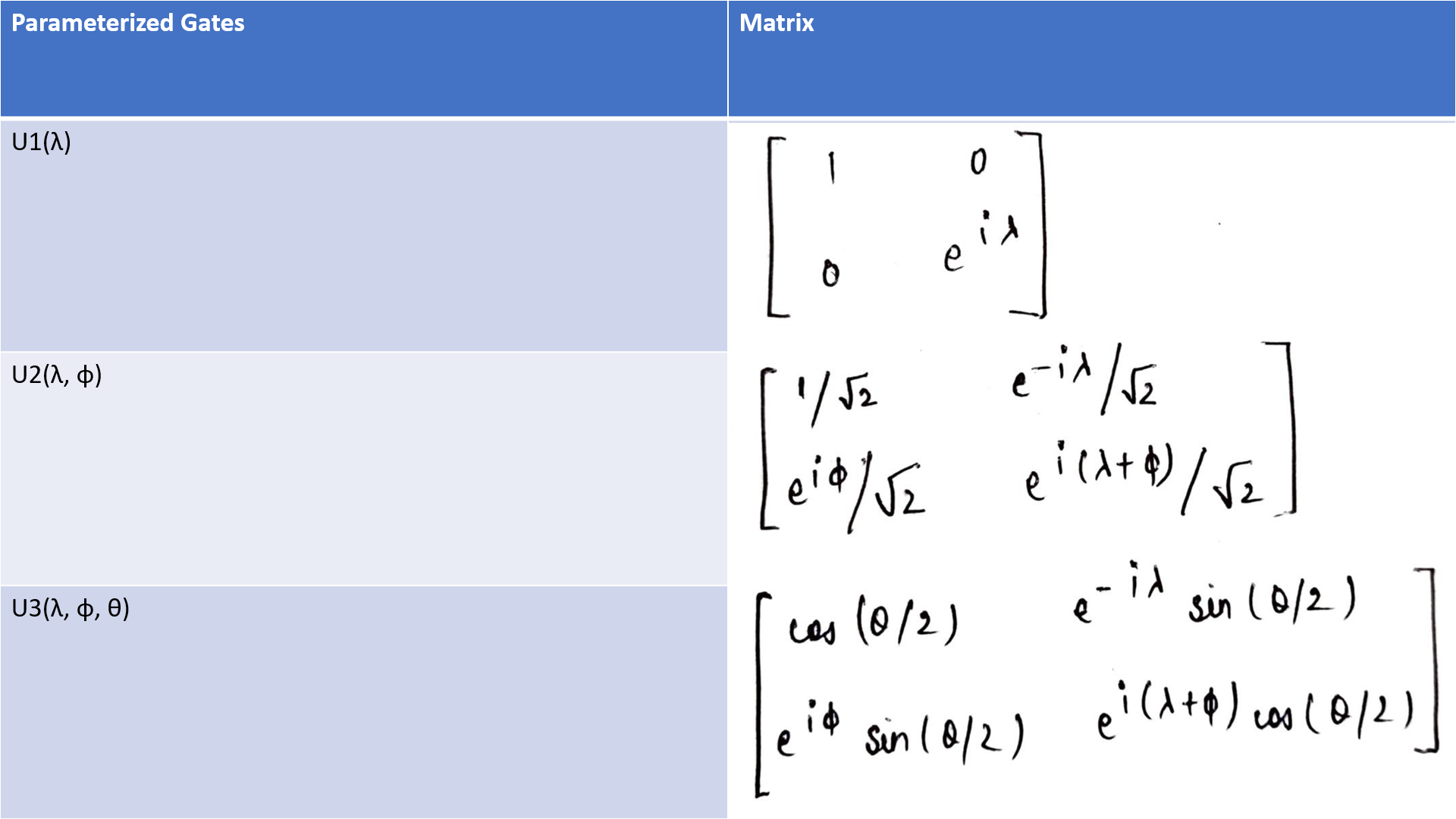
9- Circuit diagrams
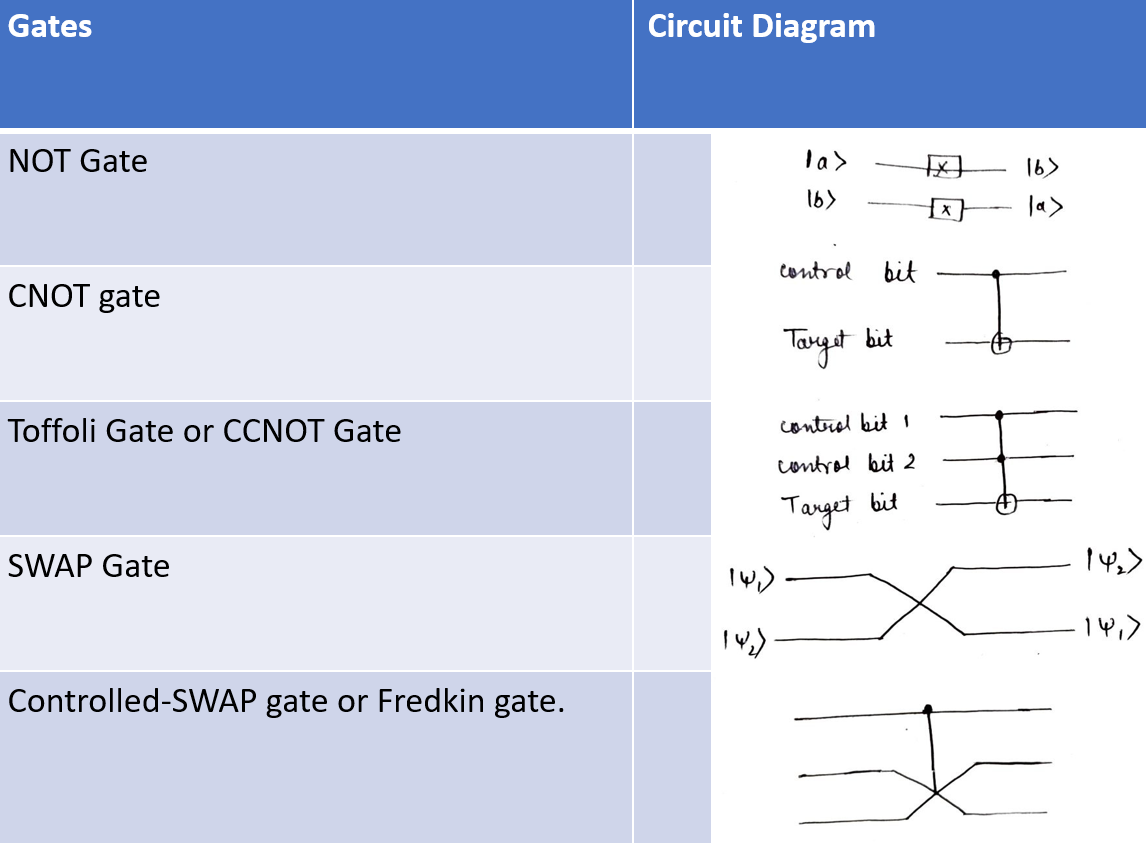
10- Gates and their action on computational basis

11- Identities
